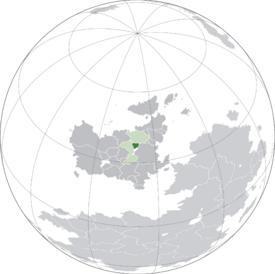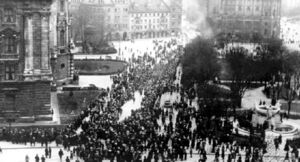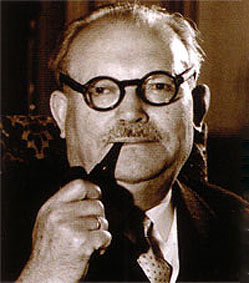Auzance
Republic of Auzance Republique Ôtuzance | |
|---|---|
|
Flag | |
| Motto: "Nos mårtchîons eshonnes" "We march together" | |
| Anthem: Li tchant des Ôtuziens (The Song of the Autuzians) | |
 | |
| Capital and largest city | Cestiène |
| Official languages | Autuzian |
| Ethnic groups | Autuzian, Gaullican |
| Demonym(s) | Autuzian |
| Government | Federal semi-presidential council republic |
• Premier | Houbêrt Louxhî |
| Catrene Burnot | |
| Legislature | Tchambe |
| Independence from Gaullica | |
• Declared | 14 June, 1933 |
• Current constitution | 31 December, 1971 |
| Area | |
• Total | 57,953.28 km2 (22,375.89 sq mi) |
| Population | |
• 2020 census | 11,461,385 |
• Density | 197.77/km2 (512.2/sq mi) |
| GDP (PPP) | 2020 estimate |
• Total | €489.5 billion (34th) |
• Per capita | €42,709.22 |
| GDP (nominal) | 2020 estimate |
• Total | €378.1 billion (40th) |
• Per capita | €33,028.71 |
| Gini (2020) | low |
| HDI (2020) | very high |
| Currency | Autuzian keuve (ƙ) |
| Time zone | UTC-1 (Cestiène Standard Time (CTS)) |
• Summer (DST) | UTC+0 (Cestiène Summer Time (CTE)) |
| Driving side | right |
Auzance (Autuzian: Ôtuzance), officially the Republic of Auzance (Autuzian: Republique Ôtuzance), is a sovereign state in central Euclea. The nation shares land borders with Valduvia to the north, Gaullica to the east and East Miersa to the west. Auzance's capital, and largest city, is Cestiène. Auzance is the 15th most populous state in Euclea with a population of 11,461,385 in 2020, and its nth largest state, spanning 57,953km². Auzance also borders Eleutherian Lakes to its south and north-east; this coastline harbours a significant portion of Auzance's population and urban regions, including its capital.
Auzance has been a socialist state governed as a federal council republic since soon after its declaration of independence in 1933, especially since the 1948 coup d'état. Auzance is a semi-presidential republic, with a high level of separation of powers; its head of state has been Premier, Houbêrt Louxhî, since 2018, while its head of government has been Prime Minister Catrene Burnot since 2019. The legislature, the Tchambe, is scrutinised by the Constitution (Mwaisse Lwè), which is upheld by the High Court (Hôt-Cour). The nation, having been a de jure council democracy since its inception, democratised rapidly in the 1970s; this has enabled it to gain a status in recent decades as being highly democratic, scoring highly on civil rights indices.
Auzance initially comprised of a lot of proto-Autuzian city-states who remained in consistent contact around the modern region of Auzance, however the rise of the Solarian Empire brought it under occupation intermittently from the early 5th century until soon before the fall of the Empire as a part of the province of Gaullica. Gaullican independence resulted in the Autuzian Marches (li Frontire Ôtuzien), whereby the fragmented feudal states of Auzance received a varying level of influence from Gaullica. Following the 15th century, the Autuzian Marches were annexed into the wider Gaullican state, and remained there for several centuries, resulting in a small but significant migration of what would become the Gaullican aristocratic class, and moderate use of Gaullican (into a dialect known as Auzance Gaullican). The region industrialised rapidly in the 19th century, resulting in the Spring (Potchî) and rural-urban migration.
Following the onset of the Great Collapse in the 1910s, the Gaullican regime's turn to national functionalism led to a harsh rule on Auzance; this persecution of regional culture and economic malaise all became known as "the Sadness" (li tristèsse). Social unrest, initially quelled in the first rise of Gaullican national functionalism, slowly began to rise; by the middle of 1933 during the Great War, Auzance's resistance movement was centralised and had gained control of significant regions, having been radicalised by decades of suppression. The decline of Gaullica's wartime situation precipitated an initially brutal, but eventually rather short war for independence, in which Auzance gained its independence by the summer of 1934. The government, at first a broadchurch from the centre to far-left, centralised its control under the far-left Authoritarians (Otoritaires), under the leadership of Remy Warnot; the councilist authoritarian republic to its north, Valduvia, effectively occupied the state during this time.
Warnot's regime, initially focused on "defunctionalisation", and a general transition towards a mostly-democratic councilist republic, deteriorated into the 1940s; the growing authoritarianism of the Warnot government, enabled by the lack of constitutional controls to prevent its actions, resulted in a return of perennial unrest. On 8 February, 1948, Remy Warnot was ejected by his party and arrested, in a coup d'état largely believed to have been executed by the Valduvian government and internal opposition in Auzance, leading to the first elections since 1938 and mild democratisation. A second phase of far more rapid democratisation arrived in the 1970s, both as Valduvia had increasingly reneged its occupation, and Ritchåd Cougnî - a reformist Labour Premier - engaged in a decade of reforms aimed at civil rights protection, advancement of social and economic rights, slight market liberalisation, and the separation of powers under a codified constitution and separated government. Economic reforms begun in this period ended a lengthy period of stagnation, and begun a period of relatively rapid economic development, transitioning to a service-dominated economy.
Auzance is now a developed council communist service-dominated economy, with limited market reforms, with relatively high levels of income and standards of life, and a strong record for civil rights. Auzance has historically been determined as a small power due to its reliance on its allies, particularly Valduvia, however its socioeconomic progress and independence in recent decades have put this status into dispute. It operates a primarily collectivised economy, with significant financial, administrative, construction, healthcare, education and utility sectors. The Auzance economy today is advanced, and the country enjoys a high level of socioeconomic equality, though it remains significantly behind most of the Euclean Community. Auzance is economically, politically and militarily aligned to MASSOR, alongside its neighbours in central Euclea, and enjoys thawing relations with most of the continent.
Etymology
The Autuzian Ôtuzance sources from the Autuzian portmanteau of Ôtu and uzance; the literal meaning of this being "other culture". Folk etymology, widely recognised up until the 20th century, originally held that it sourced from an untraceable word Ôt (apparently "eight", hence eight cultures) or that Ôtu was an original word for Autuzians (hence "Autuzian culture").
History
Prehistoric Auzance
Agricultural communities in Auzance have been dated back as early as 4500BCE; pottery, flint stones, flint mines and stone circles all mark the prehistory of Autuzian civilisation, as well as the Oxhea (literally "bone"/"spine") stone temple, whose origin and name are disputed. Pottery cultures were divided between the Cestiène culture and the Lac Blanke culture, with the latter predating the former by a few centuries but both overlapping considerably, in the late prehistoric era.
In the centuries prior to its amalgamation into the Solarian Empire in the 5th century, Auzance was inhabited by a web of agricultural societies, mostly city-states. The Three Roads, two spanning the coastlines of the lakes, and one going inland to the north, became the region's most prosperous and mercantile corridors, and much of Auzance's urbanisation has since occurred along similar regions.
Solarian occupation
Auzance was occupied during the 5th century CE, and merged into the Gaullican region, with some more persistent or united regions' independence continuing into the late 5th century, while others aligned and amalgamated into the Empire within years of its formation. In spite of the Solarian Empire continuing its occupation of Gaullica proper into the 14th and 15th centuries, Auzance fell outside of its bounds by the 11th century as its power waned, leaving Auzance a disunited and mostly feudal group of Old Autuzian-speaking societies.
Autuzian Marches
Auzance found itself a part of the Gaullican sphere of influence quickly, becoming an expanse of fragmented feudal marches known as li Frontire (the Frontier) in Autuzian. Kings of Gaullica exerted varying levels of influence and control over these marches, and Autuzian diverged from the Gaullican language during these centuries, although remaining significantly influenced by it.
Gaullican Auzance
By the 17th century, Gaullica had occupied Auzance directly, and Auzance became a region of Gaullica proper, following the partition of Miersa in the 1620s. The successive centuries under Gaullica saw the upper stratas of Autuzian society increasingly speak Auzance Gaullican, compared to the rest of society who continued to speak Autuzian by and large. Gaullicans who arrived in this period make up a small, but significant, minority in the modern period, despite their persecution in the 20th century.
Industrialisation
The "Spring" (Potchî) brought with it a demographic explosion and economic transformation, as the economy of the 19th century Autuzian province rapidly altered. The region's population rose eightfold in a century to over eight million, while its capital's population outpaced even this; the rise of Autuzian in cities, having slowly been displaced by Auzance Gaullican in some areas, returned as rural Autuzian speakers migrated into the cities. Tensions began to rise in this period, especially as Gaullican was both nationally promoted - to the extent that Autuzian identity was routinely and persistently persecuted - and also associated heavily with the highest social stratas of the late-19th century society.
Auzance in this region experienced heavy economic growth, however the lives of many in the working-classes in both urban and rural areas were at the very least not benefactors of the Spring. Slums (les mannets, literally the dirty ones) populated a noteworthy portion of nearly every major city, working conditions were harsh, child labour commonplace, and infectious diseases commonplace amongst these regions, such as cholera and tuberculosis. A great deal of resentment built over the period over this settlement, and the region's nationalist movement began to flourish ezès-daegns (similar to underground). Auzance Gaullican, meanwhile, developed as a dialect of Gaullican spoken by the region's burgeoning upper-middle-class and aristocracy; the dialect continues to be spoken in Auzance today amongst a minority of primarily elderly (65+) speakers. A heavy degree of acrimony was felt towards the industrialists during this period by many Autuzians, which eventually would culminate in the Otoritaire government's brutal treatment of former industrialists and those accused of "economic murder" in the 1940s.
Revolutionary Auzance
The Great Collapse brought with it the start of what was named the Sadness (li tristèsse), whilst the underground movement promoted tunneluzance (tunnel culture, semi-secret Autuzian identity); initial attempts to consolidate an opposition movement upon the rise of Gaullican functionalism in the late 1910s were met with swift repression, and the resistance - at this point divided and sporadic in strength - fragmented heavily, sustaining significant damage to morale and strength. Social unrest, however, was commonplace, as were civil disobedience and wildcat strikes - this earnt the region, already known for its regional identity, a significant degree of negative attention by the functionalist governments of the 1910s, 1920s and 1930s.
The situation deteriorated into the 1920s, and 1930s; Auzance was by and large unsympathetic to national functionalism, especially compared to the Gaullican nation at large, while the resistance was steadily radicalised - with more causes sympathetic to movements similar to those seen in Valduvia and the Euclean west rising in influence - during the Great War. Underground resistance movements began to conspire, and sabotage missions were commonplace throughout 1931 and 1932, while protests - which were almost universally brutally repressed - persisted almost constantly throughout the 1930s. Even in the months prior to the first insurgencies, internal mutinies and insubordination was increasingly commonplace, while sabotage and wildcat striking were equally common practices during the buildup to the War for Independence.
Initial attempts to reconsolidate the opposition to the government were primarily for the cause of liberal reforms and relaxations, and often not explicitly associated with Autuzian nationalism, nor communism. As the Gaullican state suffered defeats in the middle years of the Great War, the economic cost of the war as a whole was beginning to sting for Autuzians, whilst Gaullica's ability to consolidate its control constantly was undermined by the increasing funnel of personnel and arms to the frontlines. This resulted in a sudden spark of the resistance movement at the end of 1932, who seized a region on the north-western periphery of Auzance, as the country began to experience the first in a series of rising upswells of co-ordinated societal unrest.
The first stage of the Autuzian revolution found Gaullican control undermined regionally as a result of several mostly successful insurgencies in the rural hubs, however Autuzian resistance forces remained constrained to the peripheries, equally proving irremovable. Gaullican government forces took to This settlement proved awkward for both sides, however as the Great War continued to deteriorate and the Gaullican regime's ability to fight internally fell, and the resistance movement emboldened and armed, more widespread revolting took place. The declaration of independence in June 1933 reflected the Storming of Cestiène, a relatively inauspicious capture - unlike the violent struggle painted by the post-revolution governments - whereby the smattering and remnants of Gaullican forces surrendered or were beaten in various government buildings, and the Gaullican attempt to recapture the city a week later failed decisively. The rest of the region was punished by the central government for the actions of revolution, however this proved pivotal in turning more to the resistance and undermining the Gaullican control of the rest of the province; sabotage was commonplace behind the frontiers, while the police forces were undermined by a lack of morale and oftentimes, desertions and mutinies. The last vestiges of Gaullican control were lost by the end of 1934, with Gaullica finally recognising Auzance as independent in 1935 following the end of the Great War and of its functionalist regime.
Warnotism and the Otoritaire regime
The initial Provisional Government, declared upon the independence declaration in June 1933, was comprised of a large variety of liberal, social-democratic, progressive, state and council socialist groups; however, by 1934, more radical elements of the government had seized control of the regime. The Otoritaires - a far-left mostly council communist, with state socialist and authoritarian tendencies - had such absolute control of the regime by 1935 that defunctionalisation even included liberals as political prisoners associated with what the contemporary government described as dirî-ists (a vulgar double-meaning of "backwards"/"behind"), alongside conservatives, the Gaullican-speaking community, much of the middle-class and functionalists, alongside a forced Autuzianisation of nomenclature and history, and a seizure of private assets. Remy Warnot himself was a leader who cultivated a populist cult of personality, and whose authoritarianism increased as he aged, becoming more explicitly dictatorial towards his final years as Premier and often reversing some of his moderately democratic reforms from his earlier years in the last years of his premiership; the government centralised considerably over this period likewise. This persecution intensified through the 1930s and 1940s, culminating in the Côpage (Slashing) in 1946; an event seeing much of the old Provisional Government's moderate and liberal factions, as well as many in positions of power - and two who were killed by mistake - murdered by the state on the orders of Premier Warnot. Warnot exploited the weak and flexible constitutional bounds, and the lack of a central judiciary, to cement his rule in this period; no election occurred after 1938.
The Warnot government initially set into motion the creation of a democratic Auzance, seeing two elections - though both had significant flaws in practice, including the threats of violence and armed presences - and increasingly relied on the implicit threat of state violence to maintain control over the nation as its democratic mandate waned in the 1940s. The regime's increasingly state socialist outlook - and perceptions within the Valduvian government, who had militarily occupied the region and operated Auzance as a client state since the 1930s - alarmed the Valduvian authoritarian government, who viewed the state socialism and independent foreign policy espoused by the Warnot ministries as antithetical to their interests; as a solution, the 1948 coup d'état of Warnot was executed alongside conspirators inside the party and armed forces, all of whom dislodged Warnot from power and executed an election. Warnot lived out his years in relative poverty but with little national retribution for his actions, dying of natural causes in 1962 aged 74; the Labour government of the 1970s expressed desires for him to have been "served justice", and stripped him of his titles posthumously.
Social unrest, which had subsided following the fall of Gaullican control, steadily rose throughout the mid-to-late 1940s, once again falling as the public mostly sided with the coup and post-election governments. Following the coup d'état, the nation's governments thawed - but often did not discontinue - previous programmes favoured by the authoritarian government, and transitioned the country back towards council communism explicitly, following the foreign policy of Valduvia. Elections were free and fair, however the party system mostly prevented much liberalisation between 1948 and 1970, creating a rising degree of antipathy, resulting in turnout as low as 45% in 1966. The economy, which initially benefitted from the fall of the Warnot regime, stagnated in the 1960s once again.
Modern era
Cougnist Reformation
In July 1970, the Labour government of Ritchåd Cougnî was elected to replace the Nationalist governments of the 1960s in a landslide, seeing turnout rise to 71%; the Nationalist vote actually rose marginally, but was surpassed massively by the popular movement created by the Labour party of the era. Cougnî's Labour was council communist, however embraced a series of liberalising reforms - the government openly endorsed separation of powers in the first months in government, and spent much of the first year passing civil rights legislation (particularly on the topics of discrimination, winding down the defunctionalisation programmes, and liberalising abortion and homosexuality laws), as well as legislating for a Constitution (Mwaisse Lwè, master law) upheld by a High Court who self-appointed ten judges. The nation separated its executive and legislature in this period, with Cougnî transitioning the role of Premier into an executive role and appointing new Prime Ministers in the Tchambe, the nation's legislature. Cougnî served three full terms before stepping back in 1988.
Cougnîsm was also concerned with economic development more than any previous government; the millénairesiiwal (Millennium Plan) saw the Labour government invest heavily in infrastructure, education, healthcare and the burgeoning civic finance-administration sector, setting into motion the economic boom that precipitated from 1970 onwards. Agriculture, formerly collectivised, was transitioned to an explicitly co-operative sector in this period, while small enterprises were re-permitted to a much more tolerated degree, and justice programmes instituted rehabilitation as the main focus of the system over retribution. The economic performance of Auzance, strong system of scrutinised human rights protection and civil rights record, effective infrastructure systems pervasive across most of the country, and economic composition of modern Auzance are all accredited mostly to the consensus developed since the Cougnîst regimes of 1970-1988, though the steady rise in economic inequality, and tensions associated therewith, has also been attributed heavily to the policies begun in the decade. Similarly, the thaw of relations between Auzance and the Euclean Community began during this period primarily, while the fall of Soravia also occurred under this period, seeing Auzance's relations with the Euclean west change significantly in this period. Cougnî personally signed the ban on the Otoritaire party in 1983, alongside that of any functionalist party - following the winding down of defunctionalism, as an alternative to said policy - for the High Court to uphold, and in the 1990s gradually expressed positive views in the "post-Labour governments".
Auzance Gaullican identity was also tolerated, following decades of open repression, following this period - Cougnî himself was descended from an Auzance Gaullican mother, and acutely aware of the impact of authoritarian defunctionalisation on the Gaullican community. Auzance Gaullican remains spoken by approximately one-tenth, primarily elder speakers, of the population; it has some significant differences from Gaullican, such as using septante and nonante over soixante-dix and quatre-vingts-dix, but is universally recognised as a dialect of Gaullican, unlike Autuzian (which, since at least the independence of Autuzian revolutionaries, has been recognised as a language independent of Gaullican).
Modern Auzance
Auzance has alternated between Liberal-Progressive, Labour, Communist-Left and Nationalist governments since the 1980s, although the Cougnîst-dominated Labour party has formed approximately half of governments in the thirty-five years following Cougnî's replacement in 1988. Limited marketisation and economically moderate reforms have taken place in the years since the 1980s, with modern economists often questioning whether Auzance is truly council communist - the Autuzian economy has seen rapid, and often consistent, growth since the 1970s therewith, outpacing its MASSOR allies in the modern era. The rise of market economics peaked in the 2000s, whereby a Communist-Left landslide resulted in a successive reintroduction of wealth taxation and basic income programmes to reduce inequality, and banned private provision of many utilities in Auzance.
Auzance in the modern day, like its MASSOR allies, experiences more cordial relations with the East than it once did, however remains both reliant and co-operative with its council communist counterparts, with a significant Valduvian military detachment remaining alongside Auzance's military facing eastward. The power of councils has similarly grown significantly in this period, seeing mass transit programmes flourish in the 2000s, 2010s and 2020s across much of the country's city clusters. Auzance is one of the few nations to avoid a technical recession in the global financial crisis of 2008, contracting shallowly for two quarters and flatlining for a third, before returning to growth in the first quarter of 2009; since the crisis, which resulted in the Liberal-Progressive government losing to the Labour party by a large margin, the Autuzian economy - and both living standards and incomes therewith - have grown considerably faster than the Euclean average. Auzance is today home to a few world-class universities, especially the Republican University of Cestiène (Univiersité Républicain di Cestiène, URC), and the Cirapicî (Skyreaching/Skyreach) district of Cestiène - as well as the Ouwestbanke district of the second-largest city, Lacaixh - house the nation's burgeoning civic banking and administration sectors, which employ an increasing quantity of the nation's graduates. Recent years have seen advances in Auzance's social rights, such as the passage of self-ID laws in 2020, the right to food becoming a constitutional right, and expanding access to gender-affirming treatment throughout the last decade.
Geography
Auzance is a central Euclean nation situated between the Elestherian Lakes. It lies in the temperate region of the northern hemisphere, and is just west of the Prime Meridian.
Provinces
Auzance has fifteen provinces, three of which are metropolitan, and an additional one being a provincial town. Each is under the jurisdiction of a council, which functions as a workers' council and has a form of voluntary sortition as per the 1971 Constitution, having evolved from 1930s councilist federalism.
Climate
Auzance has a temperate climate, afforded by its latitude of around 50 degrees north of the equator, and relatively high rainfall. Most of Auzance is oceanic temperate (Cfb), inclusive of the regions the vast majority of Autuzians reside inside of. Auzance's climate is mediated by its geographical position, and the Eleutherian Lakes both to its south and east, with the regions further away from said lakes receiving slightly less stable temperatures.
Demography
Auzance has a population of 11,461,385 as of the last census in 2020, with a median age of 39.8 and a TFR of 2.0, falling below the replacement rate. The nation experiences very low, but rising, levels of immigration and emigration. Its population grew x% between the 2010 and 2020 censuses, resulting in a change of n between the two censuses. Population growth therefore averaged 0.1x% between 2010 and 2020 annually.
Autuzian was spoken at home amongst 91.1% of the population in 2020, up from 88.3% in 2010. About half of those who stated they spoke Auzance Gaullish at home were over the age of 65, also an increase on 2010. Just 1.4% of those under 25 stated they spoke Auzance Gaullish at home.
Cities
The vast, and growing, majority of Autuzians live in urban areas. Auzance's capital, Cestiène, is also its largest city with a population of 1.77 million. Its second-largest city, Lacaixh, has 1.n million people; both of these have risen, by n% and n% respectively.
Languages
The vast majority of Autuzians speak Autuzian at home. Auzance Gaullican is spoken by a minority, at around one-tenth in 2020 and 2010, of mostly elderly speakers. Auzance Gaullican has steadily fallen as a language, initially being spoken close to similar amounts as Autuzian amongst the general population in the late 19th and early 20th century, with just 9% of Autuzians speaking the language at home natively. Autuzian schools teach Auzance Gaullican at advanced level (ages 12-18), however few schools teach it at first schools, further reducing its spread amongst younger speakers.
Religion
Religion (2019 census)
Auzance has a growing irreligious majority, with 36.3% of people recording themselves as Solirian Catholic in 2020, down from 38.9% in 2010; an increasingly large amount of these people are non-practising, estimated at around 70% of the figure. Over 60% of Autuzians do not associate with a religion. Solarian Catholicism historically had a strong influence on the Autuzian population and culture, however has gradually receded as a proportion of the population, as has the number of its practising members, particularly since the Revolution in 1933-5. A small, but growing, number of Autuzian residents adhere to another religion, with 1.5% stating they believed in another religion than Solarian Catholicism in 2020.
In the revolutionary era, the Autuzian government heavily persecuted Solarian Catholic institutions, and was indifferent to the treatment of, and discrimination against, religious communities. Since 1971, the Constitution of Auzance has afforded formal recognition of, and freedom of, religions, and Autuzian law prohibits the discrimination of people - such as in work, but also in hate speech, as a protected characteristic - based on their religion or lack thereof.
Health
Auzance has a relatively high standard of living, however also sustains rising challenges such as obesity rates, although they typically remain significantly below rates seen in most of Eastern Euclea. The life expectancy of an Autuzian in 2020 was estimated to be 80.9, up from 78.2 ten years prior. Auzance has operated a universal healthcare system, funded through general taxation and supplied primarily internally, for nearly a century. Social care programmes are widespread, and partially subsidised by the workers' councils in each region.
Education
Education in Auzance is free up to and including tertiary level, with no tuition fees implemented; student grants are available at all levels above 16 years of age, although most will be received by tertiary level pupils, and tend to be supplemented with loans. Auzance has a handful of high-ranking world-class universities, such as the Republican University of Cestiène in its capital. Childcare is run through each council, so policies vary depending on where one lives, however in general access to a certain number of hours of free childcare is subsidised fully. All universities are public entities, which are collectively owned between the workers' councils and the university staff.
Religious schools and private schools are by and large banned, although private schooling - adherent to stringent regulations - is practised for many over-18s. A significant proportion of these schools are geared towards vocational re-education, while vocational education more generally makes up a substantial share of the post-16 education system.
Politics and governance
Auzance is a semi-presidential democratic republic with a unicameral legislature, and a constitution upheld by its independent, self-appointing judiciary. The country separates its head of state (Premier) from its head of government (Prime Minister) - the former is directly elected, while the latter is indirectly elected. Auzance's Premier has been Houbêrt Louxhî of the Liberal-Progressives since July 2018, while its Prime Minister has been Catrene Burnot of Labour since November 2019. Elections for the head of state (Premier) are held each six years, whilst elections for the legislature and thus head of government (Prime Minister) are held each four years; both of these chancellery and ministerial elections were set to occur in July 2024, however the January 2023 legislative election means that this "double election" is not occurring, instead with the next legislative election falling at or before July 2026.
The legislature of Auzance is unicameral, and held entirely in the Tchambe. The Tchambe is made up of 400 members; 150 of whom are elected through single-member constituencies, 200 of whom are elected through a form of proportional representation to balance out the number of representatives in both constituencies and nationally to that of the vote share over the threshold (3% since 1977), and another 50 are "bonus" members elected from the first and second-largest parties based on the ratio of their vote share above 20% - this system empowers the largest and second-largest party slightly above their respective proportions while aiming to adequately enfranchise a wide range of voters and represent their views in the Tchambe.
The Labour party holds a coalition agreement with the Centre and Green parties, itself holding 161 of 400 seats of the Tchambe, as of July 2023, following the January 2023 Autuzian legislative election.
Judiciary
Since New Year's Eve of 1971, when the Constitution was codified by Premier Cougnî and the Tchambe, the High Court has comprised of 10 apolitical justices appointed by the High Court Appointments Committee (HCAC), all of whom serve life terms up until the age of 75, with an optional application to extend this to 80; only four have historically applied for this liberty, all of them receiving it. The High Court has become increasingly powerful and influential as its role in Autuzian law is final and paramount, while its judicial review powers enable it to strike down laws, such as the Nationalists' ban on same-sex marriage in 1995 (Minister for Civil Rights v Council of Vudîen).
The highest rung of the judiciary is housed in the Courmåjhon (Courthouse) since 1971, which is situated in Cestiène, the capital of the nation. Only one justice has to choose to hear a case, however at least three must vote in one certain way in order for a ruling to be material; bon amisse (good friend) briefs can be sent into the High Court by any person on any case to advise the Court, though this has been restricted thanks to its manipulation in previous years by specific individuals or groups.
The lower rungs of the judiciary include the Appellates' Court, and then the Republican Courts - usually situated in each major settlement. Magistrates' Courts tend to be the starting place for most legal cases - unless they confer enough immediate importance to refer to a higher court, very typically Republican Courts - in Auzance, whereby either magistrates (unqualified, but loosely trained laymen) or loukîers (qualified legal officials for the magistrates' courts) preside over a juryless court who have very limited powers. The Autuzian system of law is adversarial, and involves jury trials quite oftentimes.
Economy
Auzance has a developed, advanced council communist economy generating €378.1 billion as of the end of 2020, having grown by 5.09% year-on-year since the end of 2019. Auzance has a sizeable, and increasing, co-operative social market sector developing - particularly round its fastest-growing sectors, such as civic banking, administration and retail - while its collectivised utilities make up a significant portion of economic output. Agriculture accounts for 2.2% of GDP, industry for 13%, and services for 84.8%, with services making up an increasing proportion of output in the Autuzian economy. Despite being below most of its East Euclean peers, it remains above all other MASSOR economies in per-capita output, while retaining the vast majority of economic equality seen in the councilist world, with a Gini coefficient of 21.1 in 2020, although this rises year-on-year most years.
Even though the economy is nominally council communist, a gradual refocus towards diversification and slight market reforms have left a significant social market sector operating through co-operatives under the oversight of labour councils exists. Small enterprises are tolerated up to a certain extent, however large enterprises owned by one individual or one selective group of individuals are banned.
Auzance has a significant energy sector, while its construction and transportation sectors make up most of the remainder of the secondary economic sector. An increasing number of professional, white-collar employment is offered in urban hubs, and the availability of reliable, state-subsidised broadband has enabled a hastening of work-from-home practices, either partially or fully. The co-operative sector makes up approximately one-third of the total economic output of Auzance, and consistently outperforms it in terms of growth.
Culture
Art
Architecture
Literature
Philosophy
Music
Cinema
Media
Cuisine
Sports
Auzance has a national football team, and competed in the 2023 IFF Coupe du monde, held in Aucuria.










